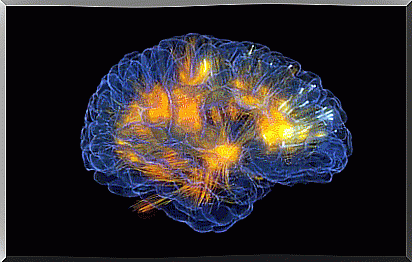Dyslexia
What is dyslexia?
The dyslexia was classified within the specific disorders of learning to read. It is characterized by problems with accuracy and fluidity in recognizing words, as well as difficulty in spelling.
In other words, people with dyslexia find it difficult to read and pronounce the words they see written. This disorder is usually accompanied by problems in writing without spelling errors, and difficulty in mathematical reasoning.
It is important to note that people with dyslexia have normal intellectual development. They have no problems with reading and writing due to intellectual problems, but what happens is that within a completely normal development a specific problem arises, affecting their ability to read and write.
Who does it affect?
Dyslexia is a disease that is diagnosed during childhood in most cases. Although it is easily detected in children, it is a disorder that persists into adulthood, causing serious problems.

Data show that dyslexia affects 5% to 10% of the population. On a practical level: in a primary class of 25 children, approximately at least one of them is dyslexic.
How does dyslexia affect people’s lives?
The first problems arise, obviously, from the first years of schooling. Difficulties in learning to read are an important barrier for these children. Not only at the academic level, but affecting your personal development, often appearing self-esteem problems.
In many cases, these difficulties generate a lack of interest in reading. The consequences of them are:
- Insufficient or poor vocabulary.
- Reading comprehension problems.
- Problems to understand complex texts, deduce and draw conclusions from them.
People with dyslexia are aware of their limitations in the vast majority of cases. This explains the frequency with which these people suffer from low self-esteem, anxiety, and even depression.
Why does dyslexia happen?
To answer this question, we will present step-by-step answers below.
1. How do we read and write the words?
When explaining how we write a word, the most accepted hypothesis is the dual route model. According to this model, to write a word we can:
- Retrieve it from memory, in the case of familiar words. This is what is called the “lexical route”. It is based on the spelling visual lexicon warehouse. That is, in the information we keep in memory of how we saw a written word.
- For example, we learned how to spell the word “bathroom”. The next time we want to write it, we will retrieve it from our memory, from our “word store”.
- The other option is to convert the phonemes that make up the word into graphemes. Or what is the same thing, converting the sounds into the corresponding graphic representation. This is the option used to write new words.
- In the early years of childhood, the knowledge is acquired to carry out this conversion of phonemes into graphemes. We learn that the letter “B” corresponds to one sound, and the letter “S” corresponds to another. That way we can write words that we haven’t heard before.
- In a very simple way, we know the sounds that make them up, and we simply represent them. This theory is supported by the latest findings obtained by brain imaging tests, as it was possible to demonstrate the existence of an anatomical basis.
2. And, what happens in the brain?
In a very general way, it can be said that what happens is that the connections that must be established between the regions of the brain involved in the language diminish.
3. What are the brain regions involved in language?
First, the Broca area. It is found in the frontal lobe of the dominant hemisphere. That is, on the left side for most people, and on the right side for a percentage of deaf people. In general, it is responsible for articulating words, naming and reading in silence.

Second, the Wernicke area. It lies between the temporal and parietal lobes of the dominant hemisphere. Its main functions have to do with the recognition of spoken words. Furthermore, it is the region where the sequences of sounds that make up words are stored.
And finally, there is an area in relation to the parietal and occipital cortex whose function is to form words.
What types of dyslexia are there?
- . People with this type of dyslexia use the visual route; that is, they “visually” read the words. Thus, they can easily read familiar words, but it is impossible for them to read unfamiliar words.
- Superficial (visual) dyslexia. People with this type of dyslexia use the phonological route. Thus, they read the words from the syllables that compose them. Therefore, they have difficulties when reading words whose communication is not understood by their writing.
- . These are the most serious cases, where both pathways are affected. The result is significant difficulty reading words, multiple spelling errors and even confusion about the meaning of different words.
Treatment
The treatment of dyslexia is essential to alleviate possible long-term problems, both academic and emotional. In fact, rehabilitative treatments have been shown to be very effective in these children.
Treatment usually consists mainly of:
- Reinforcement with specialized teachers.
- Treatment with Logopedas.
- Monitored teaching of study techniques.
- Chips/reinforcement exercises after classes.
Family support is also of paramount importance for the treatment of dyslexia. It is not only by motivating these children that we can make them advance in their academic and personal life, but also by focusing on academic reinforcement activities, which will help their study techniques to improve considerably. Especially reading and writing.

In addition, children can be encouraged to carry out activities that increase their self-esteem (sports, extracurricular activities, etc.) so that their mood can improve. On the other hand, if there are major problems of anxiety or depression, the help of a professional is indicated.









